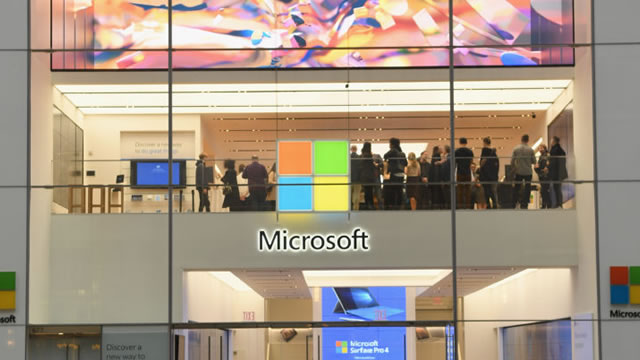Die Microsoft Corporation entwickelt, lizenziert und unterstützt weltweit Software, Dienste, Geräte und Lösungen.
Das Unternehmen ist in drei Segmenten tätig: Produktivität und Geschäftsprozesse, intelligente Cloud und mehr Personal Computing.
Das Segment Produktivität und Geschäftsprozesse bietet Office, Exchange, SharePoint, Microsoft Teams, Office 365 Security and Compliance, Microsoft Viva und Skype for Business; Skype, Outlook.com, OneDrive und LinkedIn; und Dynamics 365, eine Reihe cloudbasierter und lokaler Geschäftslösungen für Organisationen und Unternehmensbereiche.
Das Segment Intelligent Cloud lizenziert SQL, Windows Server, Visual Studio, System Center und zugehörige Clientzugriffslizenzen; GitHub, das eine Kollaborationsplattform und einen Code-Hosting-Service für Entwickler bereitstellt; Nuance bietet KI-Lösungen für das Gesundheitswesen und Unternehmen.
und Azure, eine Cloud-Plattform.
Es bietet außerdem Unternehmenssupport, Microsoft-Beratung und professionelle Nuance-Services, um Kunden bei der Entwicklung, Bereitstellung und Verwaltung von Microsoft-Server- und Desktop-Lösungen zu unterstützen.
sowie Schulung und Zertifizierung für Microsoft-Produkte.
Das Segment „More Personal Computing“ bietet Windows-Originalgeräteherstellerlizenzen (OEM) und andere nicht volumenbezogene Lizenzen für das Windows-Betriebssystem.
Windows Commercial, wie Volumenlizenzierung des Windows-Betriebssystems, Windows-Cloud-Dienste und andere kommerzielle Windows-Angebote; Patentlizenzierung; und Windows Internet der Dinge.
Darüber hinaus werden Surface, PC-Zubehör, PCs, Tablets, Spiel- und Unterhaltungskonsolen und andere Geräte angeboten.
Gaming, einschließlich Xbox-Hardware sowie Xbox-Inhalte und -Dienste; Videospiele und Lizenzgebühren für Videospiele Dritter; und Suche, einschließlich Bing- und Microsoft-Werbung.
Das Unternehmen verkauft seine Produkte über OEMs, Distributoren und Wiederverkäufer; und direkt über digitale Marktplätze, Online-Shops und Einzelhandelsgeschäfte.
Die Microsoft Corporation wurde 1975 gegründet und hat ihren Hauptsitz in Redmond, Washington..









